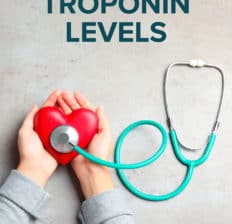This Dr. Axe content is medically reviewed or fact checked to ensure factually accurate information.
With strict editorial sourcing guidelines, we only link to academic research institutions, reputable media sites and, when research is available, medically peer-reviewed studies. Note that the numbers in parentheses (1, 2, etc.) are clickable links to these studies.
The information in our articles is NOT intended to replace a one-on-one relationship with a qualified health care professional and is not intended as medical advice.
This article is based on scientific evidence, written by experts and fact checked by our trained editorial staff. Note that the numbers in parentheses (1, 2, etc.) are clickable links to medically peer-reviewed studies.
Our team includes licensed nutritionists and dietitians, certified health education specialists, as well as certified strength and conditioning specialists, personal trainers and corrective exercise specialists. Our team aims to be not only thorough with its research, but also objective and unbiased.
The information in our articles is NOT intended to replace a one-on-one relationship with a qualified health care professional and is not intended as medical advice.
How to Maintain Normal Troponin Levels
June 1, 2023

Healthy adults — those with no recent history of heart damage, kidney disease or serious lung damage — normally do not have high enough levels of the protein called troponin in their bloodstreams to be detected. However, when someone has a heart attack or experiences another injury to the muscles of the heart, troponin levels quickly rise.
Doctors can now measure troponin levels in the blood within hours of symptoms emerging in order to screen for life-threatening problems. Troponin tests are more sensitive and fast-acting than tests used in the past to detect heart attacks, which means patients at risk for cardiac arrest and myocarditis (inflammation and damage of the heart muscle) can receive medical attention right away that sometimes can be life-saving.
What Is Troponin?
Troponins describe a group of proteins that are normally only found in the skeletal muscles and heart but can leak into the bloodstream if the heart becomes damaged.
These proteins help regulate muscle contractions and functions of skeletal and heart (cardiac) muscle fibers. They are released into the blood when the cells of the heart are injured and not getting enough oxygen and nutrients.
The more severely damaged the muscles of the heart are, the more that is leaked into the blood.
According to the National Institutes of Health, sometimes troponin is called other names, such as:
- cardiac troponin I (cTnI)
- cTnT
- cTN
- and others
Most heart disease tests focus on three main types of troponin proteins: troponin C, T and I. The role of troponin C is to initiate contractions by binding calcium and working together with troponin I to pull muscle fibers shorter.
Troponin T binds this protein to a larger muscle fiber complex.
Normal Troponin Levels
Levels of troponin in the blood are measured to determine whether the heart is damaged and if a heart attack (acute myocardial infarction) has occurred.
What is a normal troponin level?
Results are given in measurements of nanograms per milliliter (ng/mL). The normal range is between 0 and 0.4 ng/mL.
What is an elevated troponin level?
High levels of troponin in the blood can indicate that someone has recently had a heart attack, which describes when blood flow to the heart muscle is cut off, causing tissue damage.
High levels can also explain why someone may have chest pains, also called angina, which is a risk factor for a heart attack. If someone reports chest pains and his or her troponin level in the blood is detected to be rising, this can alert the patient’s health care provider that a medical intervention is needed right away.
Anything above the normal range (0 and 0.4 ng/mL) is considered to be an elevated troponin level in the blood. However, the higher the level is, the more likely it is that a heart attack occurred.
What level indicates a heart attack? A measurement close to 0.4 may not necessarily mean one has occurred, but a measurement such as 10 or more is a very good indication that one has.
What does a low troponin level mean?
Normally levels are very low in the blood — so low, in fact, that they cannot be detected. Low levels are therefore not a concern.
Causes of Elevated Troponin
Elevated troponin causes can include:
- Having recently had a heart attack (myocardial infarction or death of cardiac muscle), which usually results in the highest levels in the blood compared to other health problems — this may be due to congestive heart failure/acute coronary syndrome or coronary heart disease
- Kidney disease/renal failure
- Blood clot in the lungs/pulmonary embolism
- Severe infection, such as sepsis
- Atrial fibrillation
- Myocarditis
- Myocardial contusion
- Pericarditis, inflammation around the sac of the heart
- Endocarditis, infection of the heart valves
- Intense exercise, which is only temporary and not generally harmful
How to Treat High Levels
If only a small amount of troponin is found in the blood, this usually means there is some damage to the heart, but it’s likely caused by a health problem other than a heart attack/cardiac arrest if it doesn’t rise and quickly decreases. In this case, treatment may not be necessary, although it depends on the individual.
In order to reduce troponin levels, it’s necessary to treat the underlying cause of the elevated levels. It’s also recommended to take steps to generally improve cardiovascular health, including by reducing high blood pressure or high cholesterol.
Some research shows that taking statins can reduce high levels. One study published in the journal Circulation found that those with high troponin levels who took statins experienced a fivefold lower risk of heart attack or death from coronary heart disease compared with those whose troponin levels were unchanged or increased.
Statins are used to prevent coronary heart disease in people who are considered high-risk for cardiac arrest. The researchers involved in the study mentioned above explain, “A decrease in troponin could indicate treatment is effective, whereas any increases in blood troponin could prompt a change in treatment strategy.”
Depending on what other tests reveal, other medications and treatments may be necessary. These can include:
- medications to prevent clots and control other risk factors
- insertion of a stent to open a blocked blood vessel
- coronary angioplasty to open up a blockage
- bypass surgery to help blood reach the heart
- ablation to remove damaged cells
What Happens During a Test
The U.S. Food and Drug Administration approved the use of high-sensitivity troponin tests in the United States in 2017. These tests are used to detect heart injury and acute coronary syndromes as quickly as possible.
Levels of cardiac-specific troponins I and T tend to be elevated in the blood within three to six hours after injury to the heart. It takes a few hours for levels to rise after heart cell death begins, so tests are usually repeated.
Once elevated above normal levels, troponin may remain high for 10 to 14 days if a heart attack has occurred.
What is the function of troponin I? Cardiac troponin I and T are biomarkers of cardiac injury, so they are usually included in tests following a suspected heart attack.
Normally either troponin I or T levels are tested but not usually both, since levels of each provide the same information. Sometimes doctors will also use other biomarkers to confirm suspected damage to the heart, such as by testing CK–MB or myoglobin.
A troponin test involves taking a blood sample from a vein in the arm.
When should troponin levels be taken? They are usually tested several times over the course of about 24 hours to monitor how they are changing.
Most often someone’s levels will be tested if they report experiencing symptoms of a heart attack or chest pains. Symptoms that can lead to tests being ordered include:
- Chest pains (angina) and discomfort
- Trouble breathing
- Pain in the arms (usually one), back, jaw or neck
- Nausea and sometimes vomiting
- Fatigue
- Dizziness
- Increased sweating
Doctors usually interpret troponin levels by monitoring how they drop after someone reports chest pains and other symptoms. If levels decrease within 12 hours of symptoms starting, there’s a good chance the symptoms were not caused by a heart attack.
If they stay elevated for several days or more, the person likely did experience one.
Other tests will also be used to make a diagnosis, such as other cardiac tests, a physical exam, clinical history and ECG.
Conclusion
- Troponins describe a group of proteins that are normally found in the skeletal muscle and heart. Normal troponin levels in the blood are very low, but levels can increase due to heart damage, a heart attack (myocardial infarction) or other serious illnesses.
- What is considered a high level? The normal range is between 0 and 0.4 ng/mL. Anything above this is considered high and potentially problematic. The higher the level, the more serious the condition is.
- Treatment for high troponin levels involves resolving the underlying health problem that’s causing levels to rise (heart disease, infection, etc.). Improving heart health and sometimes taking statins may also be recommended.









